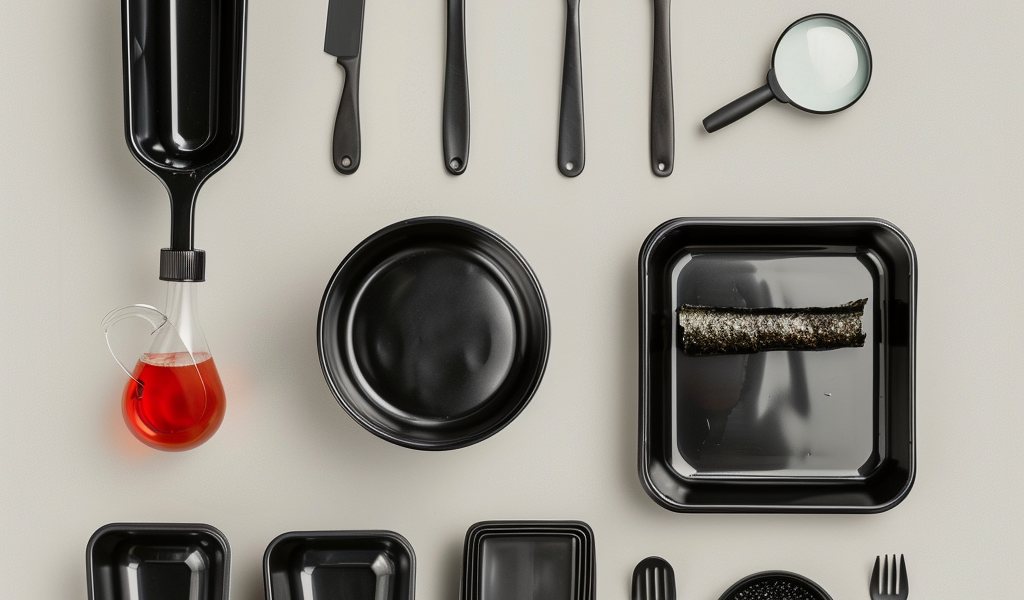Recent research has unveiled alarming findings regarding toxic flame retardants present in everyday black plastic household items, including food-contact materials. This new study, published in the scientific journal Chemosphere, raises significant health concerns as it reveals the presence of various harmful chemicals that we are often unaware of.
The study highlights the detection of up to nine different flame retardants in common black plastic items, such as sushi takeout containers, kitchen utensils, and even children’s toys. The implications of these findings are particularly concerning given that flame retardants can leach from the plastic into food or the environment, potentially leading to serious health issues. These chemicals are linked to a range of adverse effects, including cancer, endocrine disruption, and reproductive and developmental toxicity.
Among the alarming discoveries was a sushi tray that tested positive for a banned flame retardant, which constituted 1.2% of its total weight. Another item contained flame retardants that made up 2.3% of its total weight. The study’s researchers noted that these toxic substances are typically used in electronic products, such as the black plastic casings of televisions. This suggests a troubling overlap between household items and materials often associated with hazardous chemicals.
The research team included Dr. Sicco Brandsma from Vrije University in the Netherlands, who specializes in flame retardants and their applications in electronics. His expertise allowed for precise measurement of the levels of flame retardants in the tested products and identification of the types of polymers involved. The analysis revealed that black plastic items commonly used in electronics, such as Acrylonitrile Butadiene Styrene (ABS) and High Impact Polystyrene (HIPS), exhibited higher concentrations of flame retardants compared to other plastics like polypropylene and polyamide nylon.
ABS and HIPS are particularly concerning due to their composition, which includes styrene—known to be a carcinogen derived from hazardous substances like benzene and ethylbenzene. The presence of flame retardants in these plastics raises further questions about the safety of products made from them, especially considering the potential for these chemicals to migrate into food or be ingested by children.
The findings underscore the need for increased scrutiny of the materials used in everyday household items, particularly those that come into contact with food. As consumers become more aware of the potential risks associated with toxic chemicals in plastic products, there is a growing demand for safer alternatives and greater transparency from manufacturers.
With the mounting evidence linking flame retardants to serious health risks, it is imperative for regulatory agencies to reassess the safety standards governing plastic materials used in food-contact items and household products. Public awareness and advocacy for safer materials could lead to significant changes in manufacturing practices and consumer safety regulations.
As this research highlights, the implications of using toxic flame retardants in everyday products extend beyond individual health concerns. They pose broader environmental risks, as these chemicals can persist in the environment and accumulate in the food chain. The findings serve as a call to action for consumers, manufacturers, and policymakers alike to prioritize health and safety in product design and regulation.
In light of these revelations, it is crucial for consumers to remain informed about the materials used in the products they purchase. Awareness can empower individuals to make safer choices and advocate for healthier alternatives in the marketplace. As the conversation around chemical safety continues to evolve, it is essential for all stakeholders to engage in meaningful discussions about the future of plastic use in everyday life.





